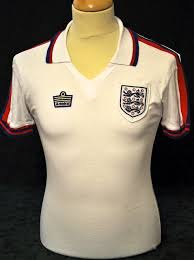
Introduction
The England kit is more than just a uniform; it is a symbol of national pride, history, and passion for football. Known around the globe, the kit represents the identity of the England national football team and has evolved through decades. As the 2022 FIFA World Cup approaches, the design and emotional significance of the England kit is once again under the spotlight, making it a timely topic of discussion among fans and sports analysts alike.
Historical Overview
The earliest version of the England football kit can be traced back to 1872, during the first international match played against Scotland. Initially, the kit was simple, featuring a white shirt paired with dark trousers. Over the years, the design has undergone numerous transformations, reflecting changes in fashion, technology, and team branding.
For example, the introduction of the iconic Three Lions emblem in the 1940s marked a pivotal moment in the kit’s history, as it established a distinct identity for the team. As the sport modernised, so too did the materials used in the kit, with advancements introducing breathable fabrics and moisture-wicking technologies to enhance player performance.
Recent Developments
As of 2022, the England kit designed for international competitions featured a striking white home shirt with a simple yet elegant design, paired with navy shorts and white socks. The away kit presented a vibrant red with geometric patterns, showcasing modern trends while honouring the team’s heritage. The kits are manufactured by Nike, who has focused on sustainability, using recycled materials in production. Fans have lauded the recent designs for combining tradition with innovation, reinforcing their loyalty and connection to the team.
Impact and Significance
The England kit has a profound impact on its fans and players, acting as a source of unity and national pride. During major tournaments, the sight of supporters proudly donning the kit is a common occurrence, symbolising collective hope and aspiration. Beyond aesthetics, the kit’s significance lies in its representation of the values and history of English football.
Moreover, players who wear the England kit carry the weight of expectations from millions of fans. Recent performances in international tournaments have further heightened the importance of the kit; notable successes or failures are often reflected in the public’s perception of the team.
Conclusion
The England kit continues to evolve while retaining the essence of what it means to represent the nation on the international stage. As the team gears up for the upcoming competitions, the anticipation surrounding the kit remains palpable. Looking forward, it will be intriguing to see how the designs balance tradition with modernity, and how they foster sportsmanship and national pride among the next generations of fans and players alike.
You may also like

The Life and Legacy of Sean Avery

The Legacy of Howard Webb in Football Officiating
